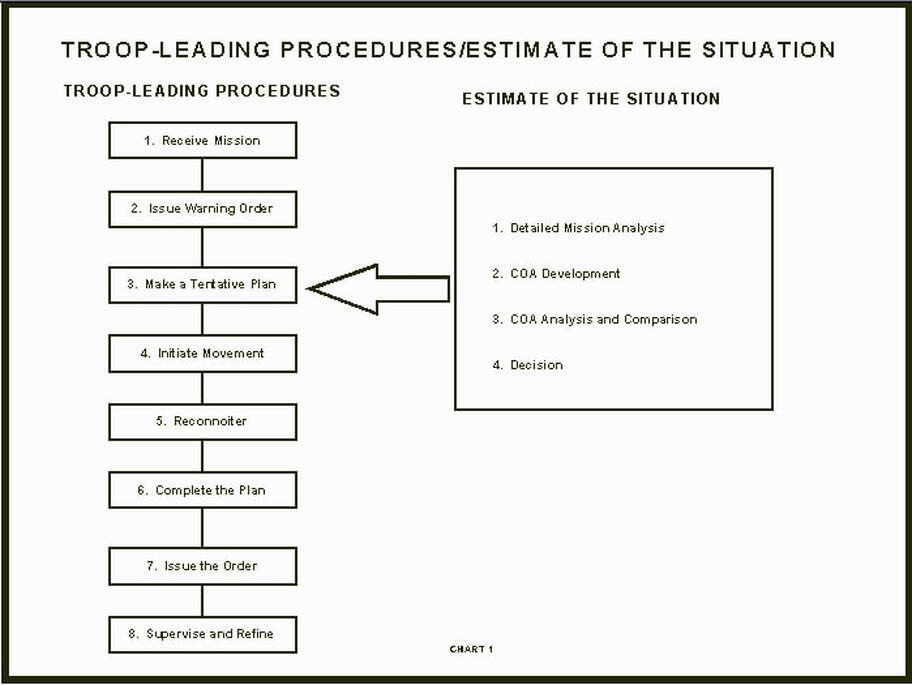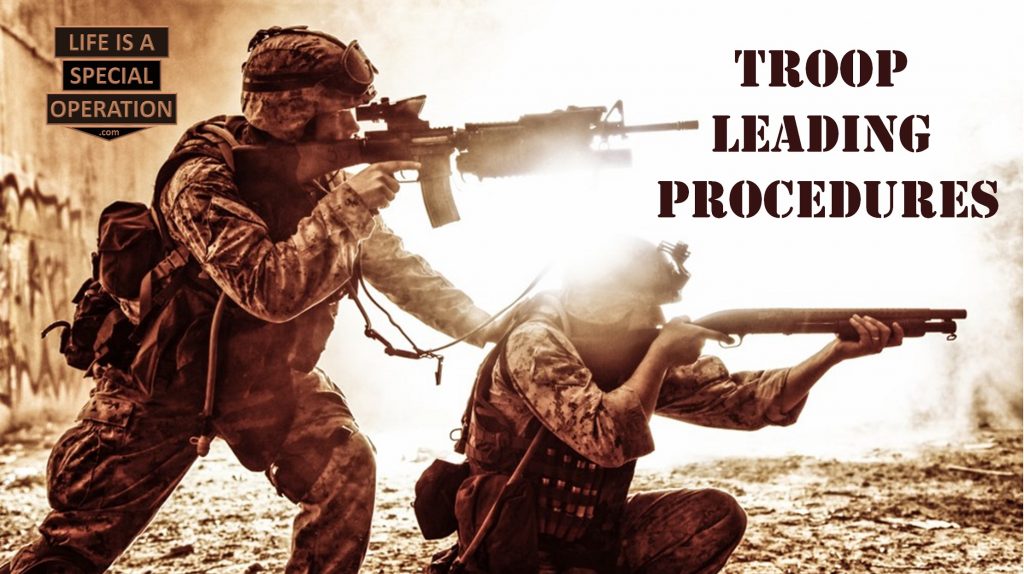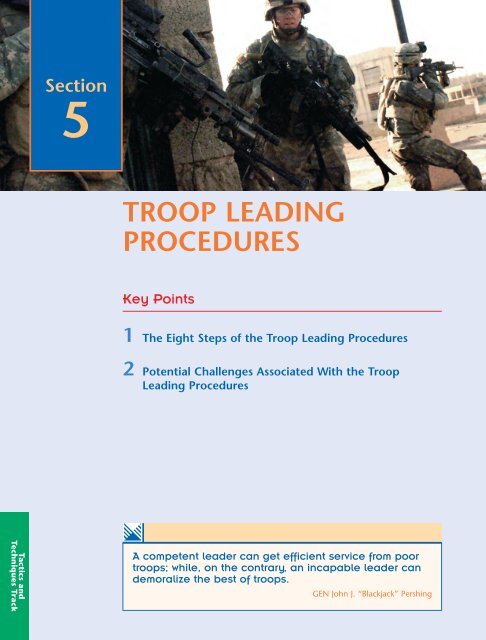Troop Leading Procedures Army Regulation
When it comes to effective troop leading, the United States Army has a set of procedures that guide commanders and leaders in their decision-making process. These procedures, outlined in the Army Regulation, provide a framework for planning, executing, and assessing military operations. In this post, we will take a closer look at Troop Leading Procedures (TLP) and their importance in ensuring successful mission outcomes.
An Overview of Troop Leading Procedures
Troop Leading Procedures (TLP) are a set sequence of steps followed by leaders to analyze a mission, develop a plan, and prepare subordinates for execution. These procedures serve as a systematic approach to decision making and help commanders effectively utilize their available resources.

The image above showcases the resilience and adaptability of the 19th Special Forces Group (Airborne) during their troop leading exercises. As they leap into action, it's important to understand how Troop Leading Procedures contribute to their success.
The Steps of Troop Leading Procedures
Troop Leading Procedures consist of the following steps:
- Receive the Mission: The first step is to receive the mission from higher headquarters. Commanders and leaders must carefully review the mission to gain a thorough understanding of the objectives and requirements.
- Issue a Warning Order: Once the mission is received, leaders issue a warning order to communicate initial information to subordinates. This order contains key details such as the mission, intent, and any initial instructions.
- Make a Tentative Plan: Leaders then develop a tentative plan based on their understanding of the mission. This plan includes the tasks, purpose, and desired end-state.
- Start Necessary Movement: After the tentative plan is developed, leaders initiate any necessary movement of personnel, equipment, or supplies required for mission execution.
- Conduct Reconnaissance: Gathering accurate and timely information about the area of operations is crucial for effective decision making. Leaders conduct reconnaissance to gather this essential intelligence.
- Complete the Plan: Once all necessary information is gathered, leaders finalize the plan by synchronizing all elements and resources. This includes determining timelines, assigning tasks, and establishing communication procedures.
- Issue the Operations Order: With the plan complete, leaders issue a detailed operations order to communicate the plan, assigned tasks, and any special instructions to subordinates.
- Supervise and Refine: Throughout the execution phase, leaders must continually supervise and refine the plan as needed. This involves monitoring progress, making adjustments, and ensuring the mission remains on track.
The Importance of Troop Leading Procedures
Troop Leading Procedures are instrumental in promoting mission success for several reasons:
- Efficient Decision Making: TLP provides leaders with a systematic method to analyze information, identify possible courses of action, and make informed decisions efficiently. This enhances the overall decision-making process.
- Effective Communication: By following the TLP, leaders can effectively communicate their intent, tasks, and desired outcomes to their subordinates. This ensures everyone is on the same page and understands their roles and responsibilities.
- Resource Optimization: TLP allows leaders to assess and allocate resources effectively. By conducting reconnaissance and completing necessary planning, resources can be deployed in the most optimal manner to achieve mission success.
- Adaptability and Flexibility: The TLP framework accounts for contingencies and unexpected situations. By incorporating flexibility into the planning process, leaders are better prepared to adapt to changing circumstances on the ground.
Subheading 1: Troop Leading Procedures in Real-Life Missions
Now that we have gained an understanding of Troop Leading Procedures, let's take a look at how they are applied in real-life missions. Whether it's a complex military operation or a humanitarian mission, TLP provides a roadmap for success.
The Battle of X
In the Battle of X, Troop Leading Procedures played a pivotal role in the success of the mission. The commander effectively utilized the steps of TLP to gather intelligence, develop a plan, and coordinate resources to defeat enemy forces. Through efficient decision-making and effective communication, the troops were able to achieve their objectives and secure victory.
The image above shows a visual representation of Troop Leading Procedures (TLP) and its impact on military decision-making. The process ensures that leaders have a structured approach to planning and executing missions.
Humanitarian Mission in Y
Troop Leading Procedures are not limited to combat operations. In humanitarian missions, the TLP framework helps leaders assess critical needs, plan logistics, and coordinate resources effectively. By following these procedures, leaders can ensure that aid is provided efficiently, maximizing the impact of their efforts.
Frequently Asked Questions
Q: Are Troop Leading Procedures only applicable to the Army?
A: While Troop Leading Procedures are primarily taught and implemented within the U.S. Army, the concepts and principles can be applied in various other military branches and even in non-military contexts where effective planning and decision-making are essential.
Q: How long does it take to complete the Troop Leading Procedures?
A: The time required to complete the TLP process varies based on the complexity of the mission and the level of command. In some cases, it may take a few hours, while in others, it can span several days or even weeks.
Q: Can Troop Leading Procedures be modified to suit specific mission requirements?
A: Yes, Troop Leading Procedures are flexible and can be adapted to meet the unique requirements of different missions. Commanders and leaders have the authority to modify the process while ensuring all essential steps are covered.
Q: What happens if a leader deviates from the Troop Leading Procedures?
A: Deviating from the TLP framework can lead to inefficiencies, miscommunication, and increased risks. It is crucial for leaders to follow the established procedures to ensure effective planning, execution, and assessment of their missions.
The Troop Leading Procedures Army Regulation, with its systematic approach to decision making and planning, forms the backbone of successful military operations. By following these procedures, leaders can enhance their decision-making abilities, optimize resources, and achieve mission success. Whether in combat or humanitarian situations, TLP ensures that leaders are well-prepared to face any challenges that may arise.
PPT - TROOP LEADING PROCEDURES PowerPoint Presentation - ID:1201425
troop procedures
Section II: A Successful MSE Network By The Numbers; Chapter 2: Preparation
 Image Source : www.globalsecurity.org
Image Source : www.globalsecurity.org troop leading procedures army military figure call 1992
Troop Leading Procedures - WELCOME TO THE HOME OF THE REAPERS
 Image Source : taskforcereaper.weebly.com
Image Source : taskforcereaper.weebly.com troop tentative
PPT - MDMP Class (Military Decision Making Process) PowerPoint
troop leading procedures powerpoint class mdmp ppt decision making military tlp process coa presentation
Tlps Army - Army Military
 Image Source : armymilitary.net
Image Source : armymilitary.net Preparation And Planning Of Tactical Communications
 Image Source : www.globalsecurity.org
Image Source : www.globalsecurity.org military troop leading procedures signal army report planning preparation call section figure way communications
DVIDS - Images - 19th Special Forces Group (Airborne) - Troop Leading
 Image Source : www.dvidshub.net
Image Source : www.dvidshub.net Troop Leading Procedures.pdf - UNC Charlotte Army ROTC
 Image Source : www.yumpu.com
Image Source : www.yumpu.com troop procedures rotc unc
Troop leading procedures army military figure call 1992. Troop leading procedures. Troop procedures. Troop procedures rotc unc. Troop leading procedures powerpoint class mdmp ppt decision making military tlp process coa presentation